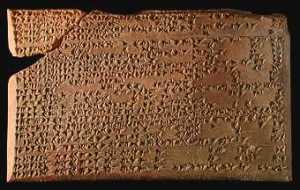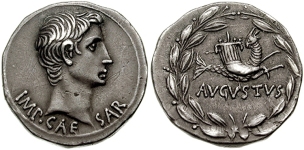Today, we see horoscope columns in the vast majority of lifestyle magazines. On tinder profiles and even tattooed on people’s bodies, you’ll find proud declarations of people’s sun signs. Have you ever asked yourself how we got here? Either way, the answer is long, meandering, and spans the globe. Different parts of the world developed different astrological forms, with the most striking of these differences being that between Hellenistic astrology, which is used in the West, and the Chinese Zodiac. In this article, we’ll be covering the most straightforward path possible to the modern horoscopes used in America today.
The Beginning
According to the American Federation of Astrologers, The Babylonians, the people of South Mesopotamia in the 18th century B.C.E., were the founders of astrology as we know it. Before then, even the cavemen had etched the position of planets onto walls and bone, but it was only with the Babylonians that these positions were used to try and predict events on Earth. The Babylonians made detailed charts of the sky, and though these charts were initially to predict natural events such as growing seasons, eventually, the Enuma Anu Enlil was produced; This is a collection of 68-70 tablets which recorded and interprets the

An Enuma Anu Enlil tablet. Photo credit to mesopotamia.co.uk.
positioning of the planets and stars, used by Babylonian priests in order to advise rulers. In its early history, astrology was not used to forecast the day of an individual, but rather, the health and well-being of an empire and its ruler. The author of the piece linked above, Rumen Kolev, essentially refers to it as “the bible for the Babylonian sky-priest.”
However, some critics, such as F. Rochberg-Halton, argue in his article “Elements of the Babylonian Contribution to Hellenistic Astrology” that the Babylonians only made contributions to the foundation of astrology, rather than being the culture from which it originated. Halton contends that the true beginning of astrology came with the Greeks – who took over the region during the many conquests of Alexander the Great in the 300s B.C.E..
The Greeks
Following the conquest of Asia, the Greeks discovered the research previously done on astrology by the Babylonians, and then advanced it tenfold during their reign. It was during this period that the astrological signs were granted the symbols they retain to this day. Likewise, it was here that elements were applied to each of the zodiac signs, and the personal horoscope began to take form – though it is important to note that this was the lesser of two major astrological practice at the time – each of which Nicholas Campion details in his 2008 book The Dawn of Astrology: The Ancient and Classical Worlds.
In this piece, Campion also brings up a phenomenon that has been common throughout the history of astrology: numerous forms existing simultaneously. While is is well-known that different cultures developed their own variations of astrology – such as Egypt with the decan system and Indian astrology, which was independent before being influenced by Hellenistic astrology – many are unaware that different types of astrology existed within a single culture. Campion details how, in Ancient Greece, horoscopes were initially created to describe a person’s general timeline in life, rather than specific day-to-day activities, while a second, broader type of astrology was used in reference to the state of the soul rather than the individual.
The Romans
Like they had in many other ways, the Greeks were influential in the practice of astrology during the Roman Empire. During this time, astrology reigned supreme in its public popularity despite restrictions set in place by rulers, reportedly as a result of astrology’s tendency to sway public opinion. However, this was eased by a succession of emperors, t

Image credit: coinproject.com
he most significant of which being Augustus. During his time as emperor, his dedication to astrology as a guide was so complete that he even had Capricorn, his moon sign, printed
on coins. Yet, despite the overwhelming use of astrology during this time, not many advancements were made within the subject.
One important figure to know who lived during the reign of Constantine is Julius Firmicus Maternus, an astrologer who wrote Matheseos, a piece on astrology for government official Lollianus Mavortius. Firmicus based his textbook on older books which he translated from Greek, thus playing a major role in preserving astrological knowledge.
Medeival England
Following the fall of the Roman Empire, astrology in the West largely fell out of popularity, with advancements occurring instead in Eastern areas such as India and the Middle East. Initially, in the 13th century astrology was used in Europe primarily in the medical field. For example, as referenced by The Mediaeval Attitude Toward Astrology: Particularly in England, astrologer Isidore Epstein stated that physicians should know astrology just as well as they know the human body.
In addition to being a time where astrology was less popular in the public, there was also greater debate concerning how to define the field itself. For example, Isidore met conflict with another statement of his that astrology combined scientific documentation of the cosmos with predictions, while others, such as poet John Gower, believed astrology was limited to the art of making predictions.
Despite these conflicts, astrology remained a constant force in the background of medieval English society: writers consistently used symbolism with astrological roots, university education was preliminarily structured into subjects in accordance with the planets, and some rulers continued to have their court influenced by astrology, perhaps most notably Henry VII of England.
A particularly notable astrologer to keep in mind from this time period was William Lily, who wrote Christian Astrology, a book renowned as one of the most important works of Western astrology.
1960s Counterculture in America
With astrology’s prevalence in England, it is nearly self-explanatory that these ideas came over with the colonists in the Americas. However, the subject only gained widespread popularity, the same popularity that has kept astrology as we know it afloat in today’s world, in 1960s America with the counterculture and New Age movements.
According to American Countercultures: An Encyclopedia of Political, Social, Religious, and Artistic Movements, astrologers at this time were less well-known than they had been in ages past. Instead, modern influencers such as Isabel Hickey, author of Astrology, A Cosmic Science, were known only by a small group. However, entering the mainstream were reports of what an astrological sign said about a person’s personality, a usage which went against the grand predictions applied to kings and empires in Greece and Rome. With the advent of the Internet, astrology began to transform as fast as the world was at the time, becoming in almost an instant what we know it as today: short, daily horoscopes and vague descriptions of personality type.
While astrology has maintained a strong prevalence in the 21st century, with nearly every American knowing what their zodiac sign is, its popularity, and more notably its credibility, have declined since the counterculture movement. To read more about the statistics of astrology’s modern popularity, head on over to a challenge stemming from this article where Bella and I live by our horoscopes to a T for a week.